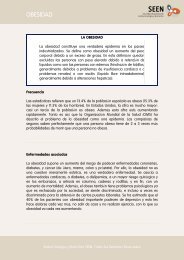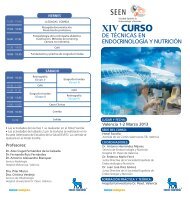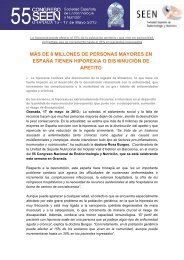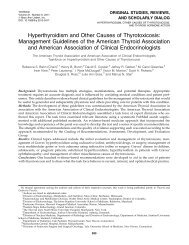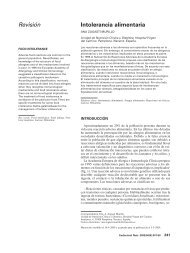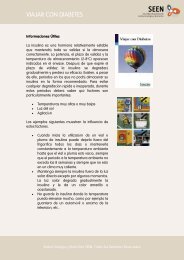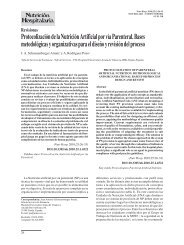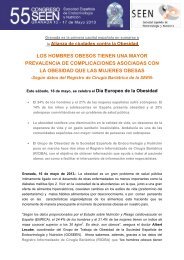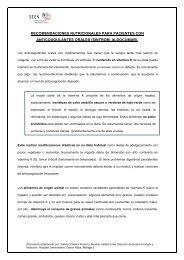Basic Concepts of Fluid and Electrolyte Therapy
Basic Concepts of Fluid and Electrolyte Therapy
Basic Concepts of Fluid and Electrolyte Therapy
You also want an ePaper? Increase the reach of your titles
YUMPU automatically turns print PDFs into web optimized ePapers that Google loves.
13. <strong>Fluid</strong> <strong>Therapy</strong> <strong>and</strong> Outcome<br />
Intravenous fluid therapy is an integral component <strong>of</strong> perioperative<br />
care, but its practice has <strong>of</strong>ten been based on dogma rather than evidence,<br />
<strong>and</strong> patients have frequently received either too much or too<br />
little fluid. There is a relatively narrow margin <strong>of</strong> safety for perioperative<br />
fluid therapy <strong>and</strong> either too much or too little fluid <strong>and</strong> electrolyte<br />
(particularly sodium chloride) can have a negative effect on<br />
physiological processes, <strong>and</strong> be detrimental to outcome (Fig. 11). The<br />
goal <strong>of</strong> perioperative intravenous fluid therapy is, therefore, to maintain<br />
tissue perfusion <strong>and</strong> cellular oxygen delivery, while at the same<br />
time keeping the patient in a state <strong>of</strong> as near zero fluid <strong>and</strong> electrolyte<br />
balance as possible.<br />
Figure 11: The dose-response curve for fluid therapy showing the ill effects <strong>of</strong><br />
imbalance. (With permission from: Varadhan KK, Lobo DN. Perioperative<br />
fluid management in enhanced recovery. In: Francis N, et al (eds) Manual<br />
<strong>of</strong> Fast Track Recovery for Colorectal Surgery. Springer, London, 2012)<br />
Postoperative morbildity<br />
Reduced circulating<br />
blood volume<br />
Increased<br />
cardiopulmonary<br />
complications<br />
Decreased renal<br />
perfusion<br />
Altered coagulation<br />
Microcirculatory<br />
compromise<br />
Hypoaemia<br />
Release <strong>of</strong> reactive<br />
oxygen species<br />
Mitochondrial<br />
dysfunction<br />
Endothelial<br />
dysfunction<br />
Multiple organ<br />
failure<br />
Normovolaemia<br />
Hyperchloraemic acidosis<br />
Pulmonary oedema <strong>and</strong><br />
decreased gas exchange<br />
Splanchnic oedema<br />
Raised intra-abdominal<br />
pressure<br />
Decreased mesenteric <strong>and</strong><br />
renal blood flow<br />
Decreased tissue oxygenation<br />
Intramucosal acidosis<br />
Ileus<br />
Impaired wound healing<br />
Anastomotic dehiscence<br />
Decreased mobility<br />
Altered coagulation<br />
Microcirculatory compromise<br />
Reactive oxygen species<br />
Mitochondrial dysfunction<br />
Endothelial dysfunction<br />
Multiple organ failure<br />
<strong>Fluid</strong> deficit<br />
<strong>Fluid</strong> overload<br />
117




